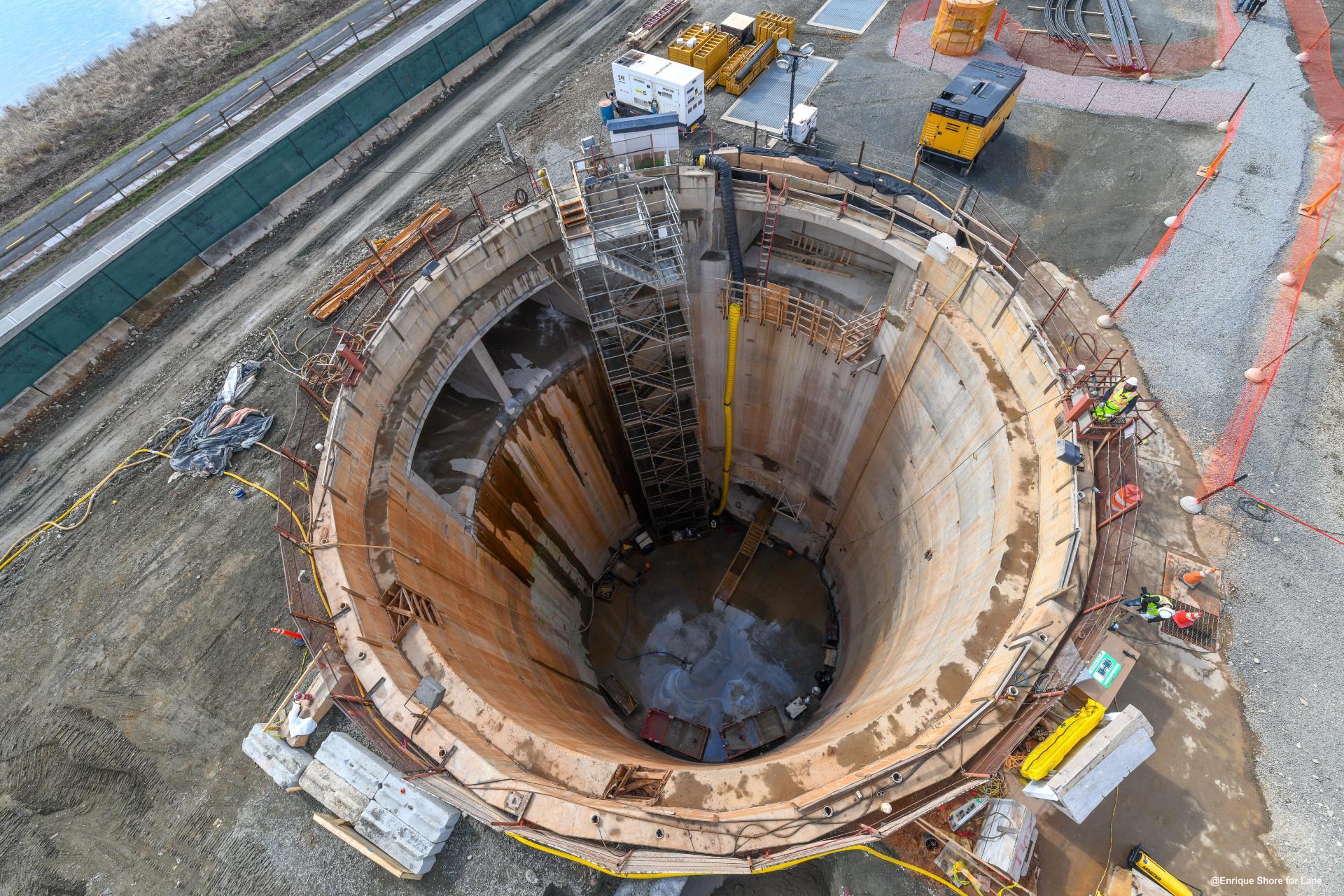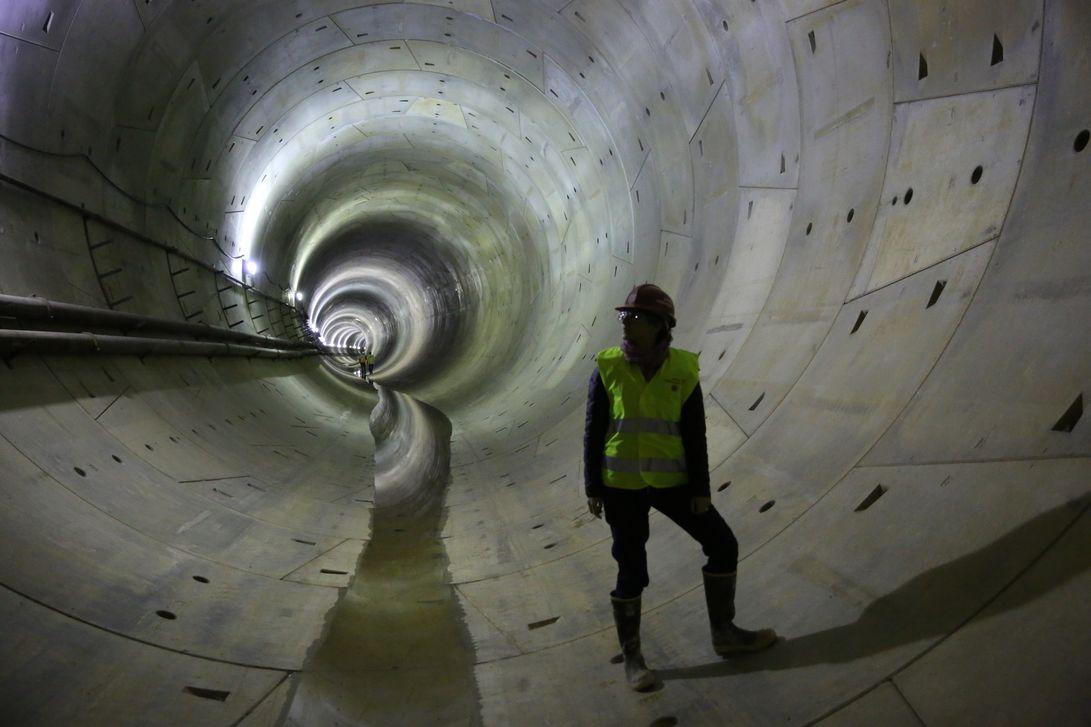Anacostia River Tunnel in Washington D.C.

The Anacostia River Tunnel project, part of the Clean Rivers project of DC Water, involved the construction of a hydraulic tunnel which will mainly be developed under the Anacostia River, a tributary of the Potomac River in Washington.
The tunnel directs the wastewater and rain water separately to prevent polluting the rivers when there is flooding (combined sewer overflows or CSO) during periods of intense rain.
In addition to the construction of a tunnel, 3.8 km long with a diameter of 7 m, the project also involved the construction of 6 water intake shafts, approximately 30 m deep.
The tunnel runs along the Anacostia River for a total length of 3,800 meters, mostly in clay soils and at an average depth of about 30 meters. When crossing the Anacostia River, the TBM excavated in sandy soils under a hydraulic head of up to 3.5 bar. The tunnel was lined with fibre reinforced precast concrete segments, which constitute a concrete ring designed for a minimum bend radius of 220 metres and with a final inner diameter of 7 metres. The earth pressure balance (EPB) TBM supplied by Herrenknecht was set for working at pressures of up to 4 bar in mixed soils of clay and sand under pressure.
Multimeda
Anacostia River Tunnel, USA - Webuild Project
When excavating the tunnel with the TBM, the CSO019 site served as the main site for the supply of materials and for the spoils of excavated material. For this purpose, the two north and south CSO019 shafts were each served by a gantry crane, with a capacity of 50 and 30 tonnes respectively, and connected by a 100 m long service tunnel. Grouting injections improved the ground underneath foundations and underground utilities, in order to protect the existing infrastructure. This procedure was partly carried out ahead of TBM excavations, and partly following excavations, as compensation grouting.
The 6 shafts were constructed with excavation techniques using bentonite drilling mud for the installation of reinforced concrete diaphragms. Once the diaphragms were completed, a dewatering system was installed. This consists of a series of shafts with small diameters and equipped with pumps capable of reducing the hydraulic pressure of the groundwater, so as to allow excavations in the shaft in well-drained conditions. Once excavation works with the TBM was completed, the shafts were lined with concrete by means of 5 circular formworks, the diameter varying according to the shaft being lined. Other concrete structures included: diversion chambers, which connect the existing structure with the new tunnel; odor control units i.e. ventilation and gas control chambers; an overflow structure; and other hydraulic structures inside the shaft. Finally, the shafts and the maintenance chambers were equipped with electromechanical equipment and put into service.
Recognitions
The project received on November 2017 the Sustainability Initiative of the Year award from the International Tunnelling and Underground Space Association (ITA-AITES), the leading international organization promoting the use of tunnels and underground space for sustainable development through knowledge sharing and the application of technology. In 2018 the project received the Global Award of Merit, Water/Wastewater and the Mid-Atlantic Award of Merit, Water/Environment from ENR Global Best project Award.
Client: District of Columbia Water and Sewer Authority (DC Water)

Technical data
+ + +
30m deep wells
+ + +
km of tunnels
+ + +
connections between wells and tunnels
Anacostia River Tunnel, USA